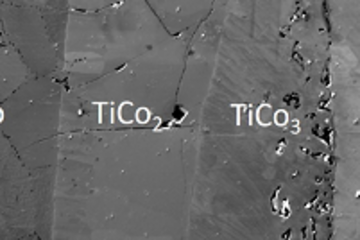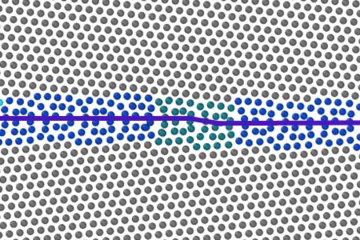All genres
501.
Teaching
Electron Microscopy and Analytical Techniques. Lecture: WS 2022/2023, RWTH Aachen University, 2022-10 - 2023-03
502.
Teaching
Moderne Material- und Werkstoffcharakterisierung: Vom Atom zum Bauteil. Lecture: SS 2021, RWTH Aachen University, 2021-04 - 2021-07
503.
Teaching
Advanced Characterisation. Lecture: WS 2021/2022, RWTH Aachen University, 2021-10 - 2022-03
504.
Teaching
Atomare Charakterisierung von Werkstoffen. Lecture: WS 2020/2021, Heinrich-Heine Universität Düsseldorf, October 26, 2020 - February 12, 2021
505.
Teaching
Moderne Material- und Werkstoffcharakterisierung: Vom Atom zum Bauteil. Lecture: SS 2020, RWTH Aachen University, 2020-04 - 2020-07
506.
Teaching
Electron Microscopy and Analytical Techniques. Lecture: WS 2020/2021, RWTH Aachen University, 2020-10 - 2021-03
507.
Teaching
Moderne Material- und Werkstoffcharakterisierung: Vom Atom zum Bauteil. Lecture: SS 2019, RWTH Aachen University, 2019-04 - 2019-07
508.
Teaching
Electron Microscopy and Analytical Techniques. Lecture: WS 2019/2020, RWTH Aachen University, 2019-10 - 2020-03
509.
Teaching
Atomare Charakterisierung von Werkstoffen. Lecture: WS 2018/2019, Heinrich-Heine Universität Düsseldorf, October 08, 2018 - February 01, 2019
510.
Teaching
Electron Microscopy and Analytical Techniques. Lecture: WS 2018/2019, RWTH Aachen University, 2018-10 - 2019-03
511.
Thesis - PhD
Structural Analysis and Correlative Cathodoluminescence Investigations of Pr (doped) Niobates. Dissertation, Georessourcen und Materialtechnik, RWTH Aachen (2022)
512.
Thesis - PhD
Advancing the understanding of the microstructure-property relationship in non-toxic and cost-effective thermoelectric Heusler compounds. Dissertation, Fakultät für Georessourcen und Materialtechnik der RWTH Aachen, Germany (2022)
513.
Thesis - PhD
Engineering Impurities in Colloidal Nanostructures used in ‘Green Hydrogen’ Generation. Dissertation, RWTH Aachen University (2021)
514.
Thesis - PhD
Development of characterization methods to improve automotive PEMFC degradation analysis. Dissertation, RWTH Aachen University (2021)
515.
Thesis - PhD
Correlation of microstructures and thermal conductivity of the thermoelectric material Ag16.7Sb30Te53.3. Dissertation, Ruhr-Universität Bochum (2019)
516.
Thesis - PhD
Characterization of aerosols and nanoparticles released during various indoor and outdoor human activities. Dissertation, RWTH Aachen University (2018)
517.
Thesis - PhD
Synthesis and in-depth electron microscopic characterization of solvothermally grown copper indium sulfide thin films. Dissertation, RWTH Aachen, Aachen, Germany (2018)
518.
Thesis - PhD
Solid state dewetting phenomena of aluminum thin films on single crystalline sapphire. Dissertation, RWTH Aachen University (2017)
519.
Thesis - PhD
The Influence of Post-Growth Heat Treatments and Etching on the Nanostructure and Properties of Rutile TiO2 Nanowires. Dissertation, RWTH Aachen, Aachen, Germany (2017)
520.
Thesis - PhD
Investigation of Sputtered Mo2BC Hard Coatings: Correlation of Nanostructure and Mechanical Properties. Dissertation, RWTH Aachen, Aachen, Germany (2017)











